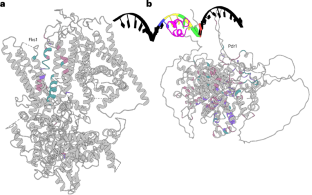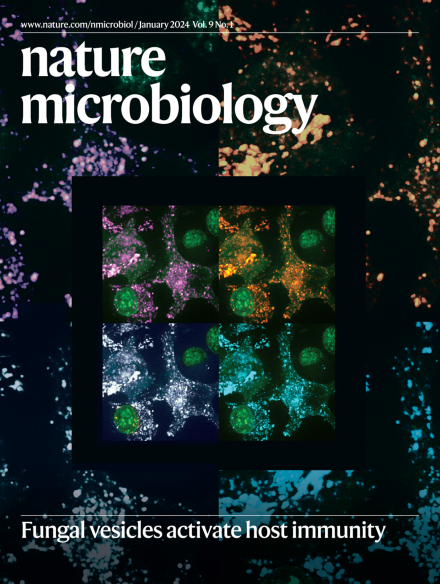共同绘制抗真菌和杀菌剂耐药性的景观图
IF 19.4
1区 生物学
Q1 MICROBIOLOGY
引用次数: 0
摘要
更好地了解哪些真菌突变引起抗菌素耐药性以及通过哪些机制是改进治疗策略和药物开发的关键。我们收集了真菌基因组中耐药突变的综合数据集,并利用它来揭示它们的多样性、物种间的保守性、对蛋白质功能的影响以及交叉耐药的潜力。本文章由计算机程序翻译,如有差异,请以英文原文为准。


Collectively charting the landscape of antifungal and fungicide resistance
Better knowledge of which fungal mutations give rise to antimicrobial resistance and by which mechanisms is key to improving treatment strategies and drug development. We assembled a comprehensive dataset of drug resistance mutations in fungal genomes and used it to uncover their diversity, conservation across species, impact on protein functions and potential for cross-resistance.
求助全文
通过发布文献求助,成功后即可免费获取论文全文。
去求助
来源期刊

Nature Microbiology
Immunology and Microbiology-Microbiology
CiteScore
44.40
自引率
1.10%
发文量
226
期刊介绍:
Nature Microbiology aims to cover a comprehensive range of topics related to microorganisms. This includes:
Evolution: The journal is interested in exploring the evolutionary aspects of microorganisms. This may include research on their genetic diversity, adaptation, and speciation over time.
Physiology and cell biology: Nature Microbiology seeks to understand the functions and characteristics of microorganisms at the cellular and physiological levels. This may involve studying their metabolism, growth patterns, and cellular processes.
Interactions: The journal focuses on the interactions microorganisms have with each other, as well as their interactions with hosts or the environment. This encompasses investigations into microbial communities, symbiotic relationships, and microbial responses to different environments.
Societal significance: Nature Microbiology recognizes the societal impact of microorganisms and welcomes studies that explore their practical applications. This may include research on microbial diseases, biotechnology, or environmental remediation.
In summary, Nature Microbiology is interested in research related to the evolution, physiology and cell biology of microorganisms, their interactions, and their societal relevance.
 求助内容:
求助内容: 应助结果提醒方式:
应助结果提醒方式:


